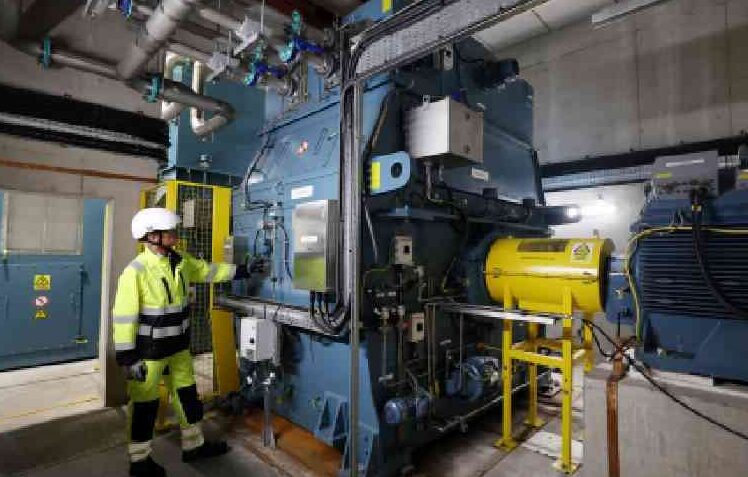As the UK shuts down coal and gas plants and leans more on renewable, it’s turning to a surprisingly old invention to keep the grid steady: flywheels.
These spinning metal machines, used for centuries in everything from potters’ wheels to steam engines, can store rotational energy and resist sudden changes. Now, grid operators want them to mimic the stabilizing force once provided by traditional power stations, helping prevent blackouts in a system dominated by wind and solar.
Why the grid needs inertia
In a conventional grid, massive turbines at coal and gas plants spin constantly, giving the system “inertia” that smooths out supply and demand swings. Solar panels and wind farms don’t provide that kind of stabilizing effect, which leaves the grid more vulnerable to sudden jolts.
Flywheels can step in. By spinning faster or slower, they react instantly to fluctuations, providing synthetic inertia. Without that buffer, “the system is more prone to fluctuations than it would be otherwise,” said David Brayshaw, a climate science professor at the University of Reading.
The risk is real. On April 28, Spain and Portugal suffered a widespread blackout when their renewable-heavy grid couldn’t absorb a sudden surge in voltage. Britain itself faced a major outage in 2019 that left nearly a million people in the dark.
Flywheels vs. batteries
Since then, the UK’s National Energy System Operator (NESO) has launched a “world-first” program to contract grid-stabilizing projects. Both batteries and flywheels can provide synthetic inertia, but steel flywheels may prove cheaper and longer-lasting than lithium-ion, according to Keith Pullen, a professor at City St George’s, University of London and director of startup Levistor.
“I’m not saying flywheels are the only technology, but they could be a very, very important one,” he said. With electric cars, heat pumps and data centers adding sharp spikes in demand, Pullen argues the flywheel’s ability to smooth out sudden loads will be crucial.
From coal to carbon-free stability
One example is Statkraft’s “Greener Grid Park” in Liverpool, built on the site of a former coal plant. Instead of smokestacks, two 40-tonne flywheels now spin there, supplying about 1% of the inertia needed for England, Scotland and Wales.
“We are providing that inertia without burning any fossil fuels, without creating any carbon emissions,” said Guy Nicholson, head of zero-carbon grid solutions at Statkraft.
By 2023, NESO reported 11 similar projects already operating across Britain, with more on the way.
Racing against time
Still, experts warn progress isn’t fast enough. The government wants the grid to run on clean energy 95% of the time by 2030 and completely decarbonize in the following decade.
“At the moment… we can’t even do it for one hour,” Nicholson admitted. Even when wind and solar generation is strong, gas turbines still run in the background to keep the grid stable.
Britain and Ireland are seen as leaders in securing stabilizing tech, while much of continental Europe has been slower to act. That may change after Spain’s blackout.
“These things are driven by events,” Nicholson said. “So, the Spanish blackout will drive change.”






